In the late 1700s, Europeans began to arrive on the Northern Plains in Alberta, Canada and their arrival brought a century of great cultural change to the First Nations of the region. During this century, the buffalo, which had provided the Indians with food and shelter, comes close to extinction. At the Head-Smashed-In Buffalo Jump Interpretive Centre near Fort Macleod, Alberta, displays on the fourth level of the building tell the story of the European impact on Native cultures.
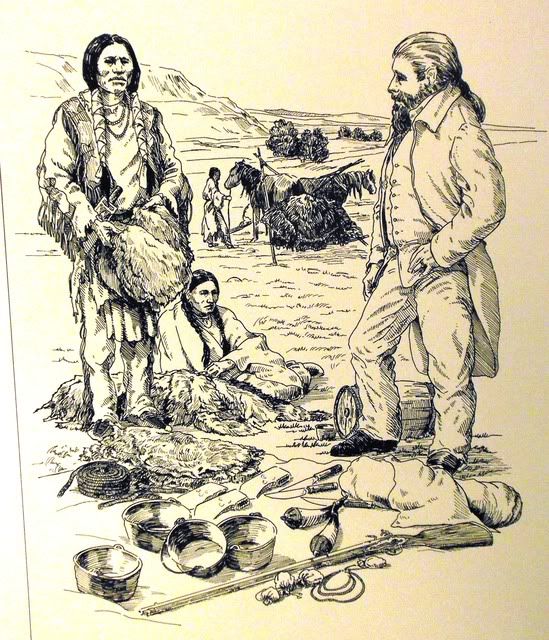
The coming of the fur trade had a far reaching impact on the people. One of the first traders to reach the Blackfoot was Peter Fidler who came among them in 1792. While he may have been the first European trader to reach the Blackfoot, European trade goods-metal items, beads, cloth, guns-had reached them several decades earlier. The traders not only brought in European trade goods, but more importantly they involved the Indians in a globalized economic system.
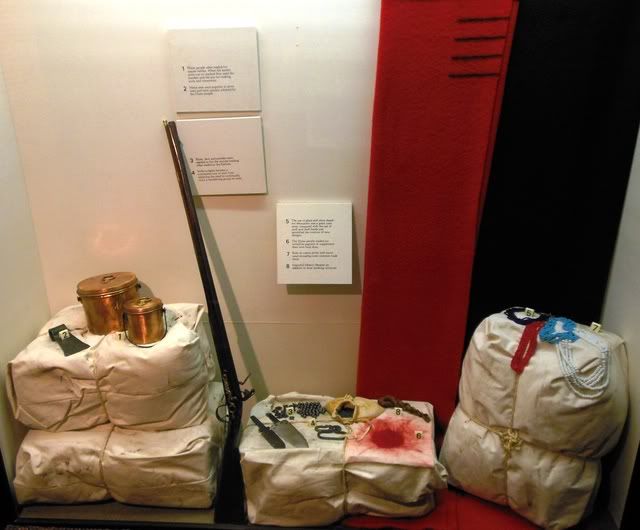
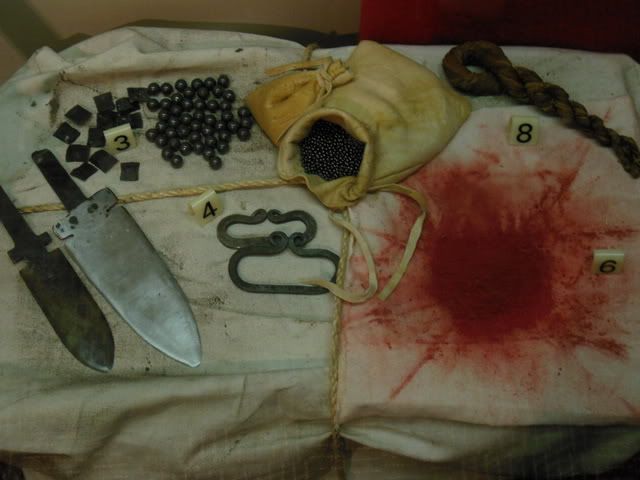
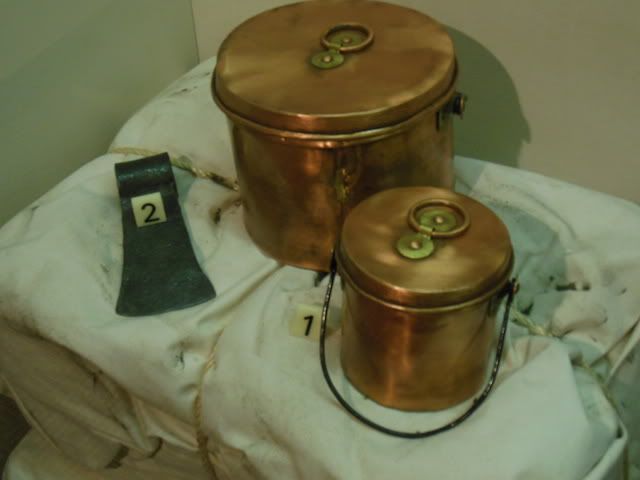
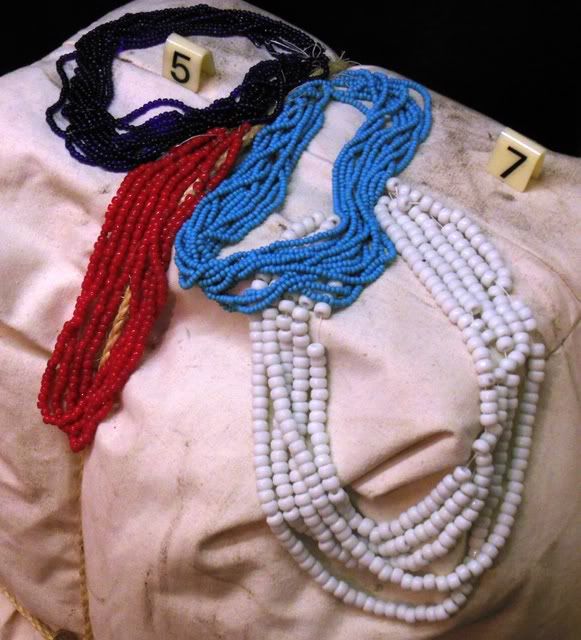
The photographs above show some of the kinds of trade items that the European traders brought with them.
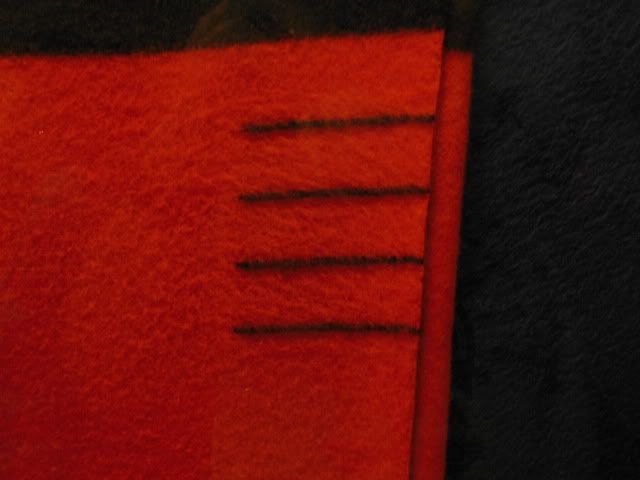
The most famous trade good developed by Hudson’s Bay Company was the blanket. By 1740, the Hudson’s Bay Company was making a specially designed trade blanket. These blankets were heavier than other trade blankets and were made of pure wool. Each blanket was assigned a certain number of “points” based on its weight, and a series of stripes indicating the “points” were woven into the blankets. In this way the trade value of the blanket was easily seen by both trader and the Indian fur trappers.
Another change was brought about the treaties negotiated between the First Nations and the Canadian government. In 1877, representatives from the Blood, Siksika, North Peigan, Stoney, and Sarcee gathered at the Blackfoot Crossing of the Bow River in Alberta to meet with representatives of the Canadian government. Father Albert Lacomb, an Oblate missionary, was hired by the government to assist with the treaty. From the viewpoint of the Canadian government, the purpose of Treaty 7 was to resolve the problem of aboriginal possession so that those lands could be legally passed into private ownership.

The Indians were given one square mile for each five people, and an allowance of $12 for the first year and $5 thereafter. The treaty ledger book showing payment to the Indians is shown above.
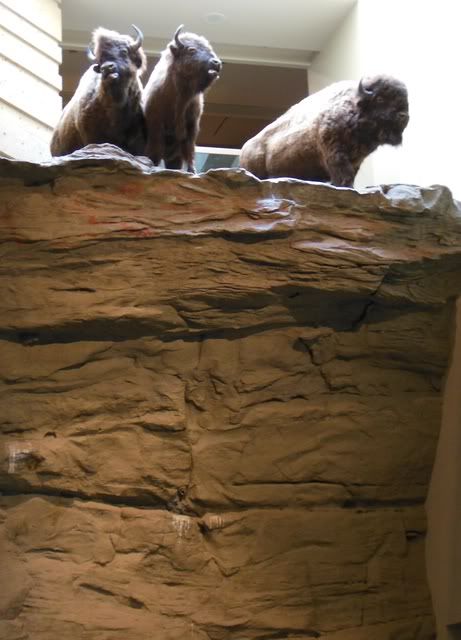

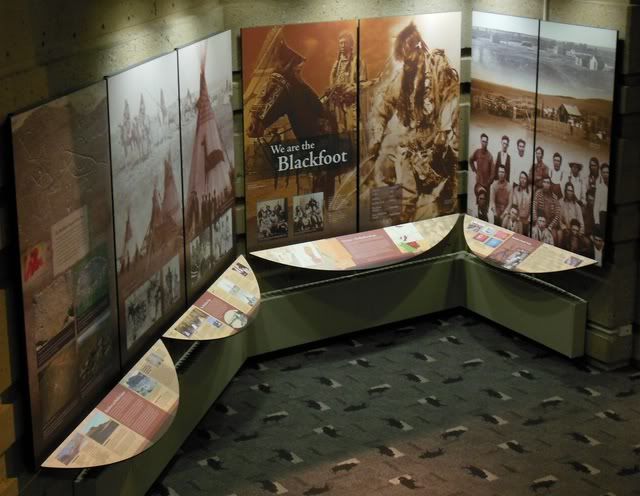

Leave a Reply